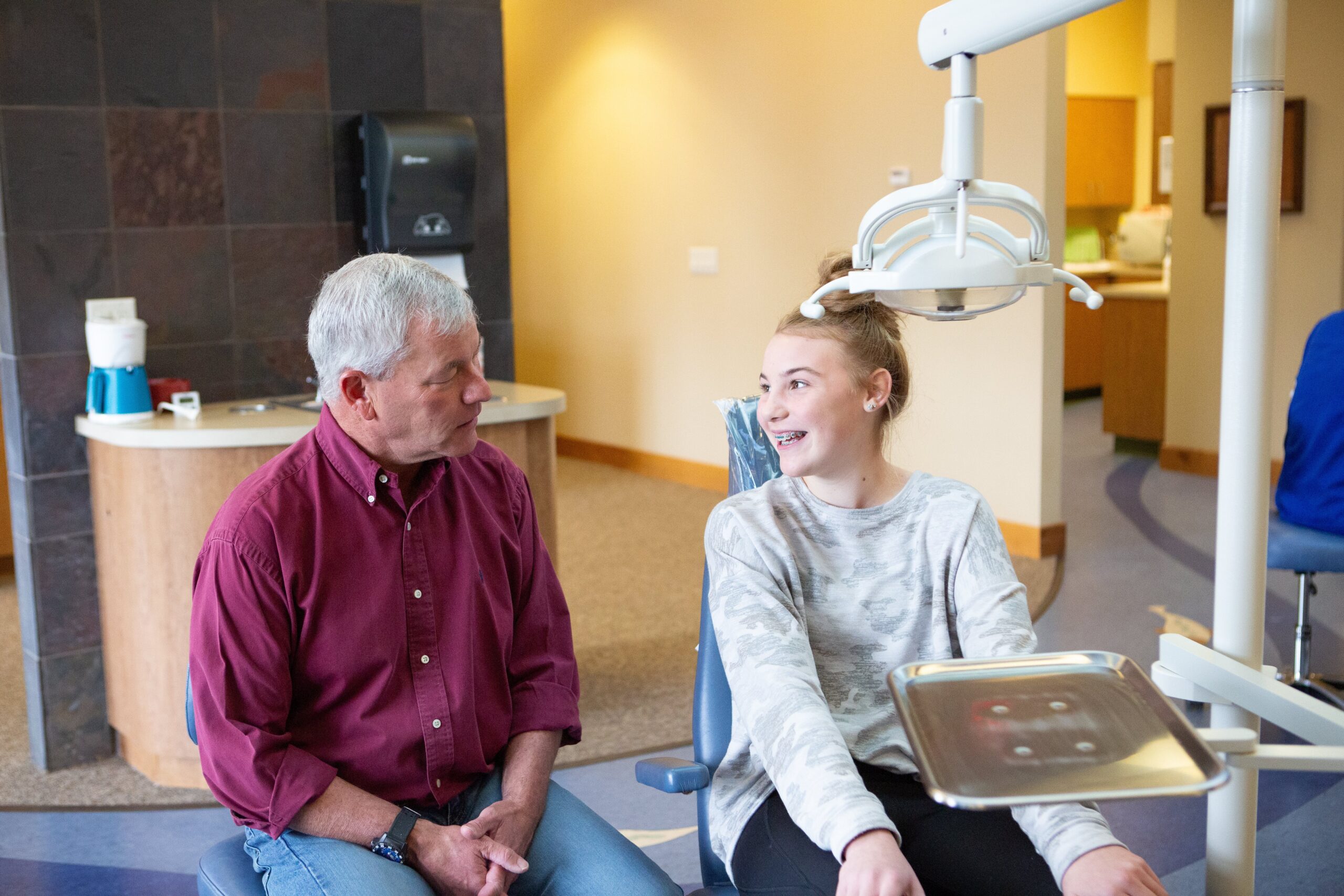If you suffer from bite issues or crooked teeth, you can realign your smile with braces. Braces treat countless orthodontic patients each year, but how exactly do they straighten your teeth? The Kovacs Orthodontics team is here to share behind-the-scenes information about how braces work and how you can expect your teeth to shift when wearing them. Read on to learn more about how each component works together and what appliances we offer.
The Anatomy of Braces: Each Component and Their Function
Braces are an incredible feat of orthodontic technology that uses multiple components to straighten teeth properly. Their custom design and placement on your teeth ensure efficient, straightforward treatment. Let’s take a look at each piece and its role in helping you achieve your smile goals.
Brackets
Brackets are the small square anchors on the front of your teeth that hold the archwire in place behind a small door. Depending on your chosen appliance, they are made of either a stainless steel mix or ceramic.
Glue
To affix your brackets to your teeth, Dr. Kovacs uses special orthodontic glue that ensures they stay in place throughout treatment. After placement, they may feel permanently stuck, but we can easily remove them with the right tools after your teeth have straightened out.
Archwire
The archwire is a long, thin wire that stretches across your upper and lower teeth. It does most of the realignment work by applying constant pressure to your teeth. It is threaded through each bracket and can be adjusted or tightened to accommodate your treatment plan.
Elastics
When your teeth need an extra push in the right direction, elastics are placed on the small hooks on your brackets. They are often used in cases of bite issues. Elastics come in multiple sizes, strengths, and colors and place the right amount of additional pressure on your teeth.
Additional Components
In addition to the pieces mentioned above, some patients may need additional components, depending on their case, including orthodontic bands. Glued to your molars, these stainless steel rings provide an extra anchor for elastics and similar parts.
Spacers are small elastic rings placed between your teeth when extra space must be made between them, sometimes to resolve crowding and fit an orthodontic band. Finally, we use ligatures. Ligatures attach the archwire to your brackets and come in various colors to match your aesthetic preferences. Some brace appliances do not require them, but Dr. Kovacs will let you know which treatment choices do.
The Basics of Braces
As mentioned, braces are used to straighten your teeth and align them into the perfect position. They are able to fix countless orthodontic issues of varying complexities, including spacing, crowding, bite complications, malocclusion, and more. Many believe that braces are all about making your smile look nice. While this is an excellent treatment benefit, straightening your teeth can also support your general health, like assisting with digestion, jaw or neck pain, and migraines.
The Process of Achieving Aligned Teeth
Using the archwire, they place constant measured pressure on your teeth and gums over a long period of time to gradually move them. This gradual movement allows your bone structure to be painlessly reshaped as your teeth settle into new positions. Your teeth actually move every day, but braces are used to control the path they take and end in an aesthetically pleasing result.
Using Modern Methods and Technology
At Kovacs Orthodontics, our team stays on top of the latest orthodontic advances to ensure our patients receive the most effective care possible. Using devices such as the iTero element scanner, Dr. Kovacs can reference detailed 3D scans of your teeth to help create your custom appliance and determine the best placement for your treatment plan.
Your Choice of Braces
Metal Braces
Metal braces have existed for many years, but they remain a reliable and popular choice among our patients, thanks to orthodontic advances. They are no longer bulky appliances but have sleek brackets and slim wires for comfort and efficiency. They can fix any orthodontic issue, no matter how complex. Metal braces remain a cost-effective option for patients as they don’t require the advanced equipment other appliances do to accomplish your smile goals.
Clear Braces
For those interested in braces without the traditional look, clear braces may be the perfect appliance for you. They provide a nearly invisible appearance with tooth-colored ceramic brackets and other components that blend in with your smile so you can comfortably continue smiling throughout treatment. They are stain-resistant and use the same reliable technology as metal braces.
How Much Do They Cost?
The exact cost for each patient will differ, as the price will fluctuate based on appliance choice, age, current oral health, the work needed, and whether insurance is being used. Below are the average prices for braces.
Metal Braces: Full treatment costs between $3,000 and $7,000.
Clear Braces: Full treatment costs between $4,000 and $8,000.
Our team will walk you through a total breakdown of the expenses during your free consultation, so no surprises await you later. If you plan on using dental insurance to cover the full or partial cost of your orthodontic treatment, we will be happy to discuss its role.
Get Started with Braces Treatment!
Now that you understand how braces straighten your teeth, we hope you feel more confident starting treatment. Dr. Kovacs and the Kovacs Orthodontics team proudly provide expert orthodontic services to Billings, Miles City and the surrounding communities. Schedule a free consultation with us today to learn more about your oral health.
 Free Consult
Free Consult


